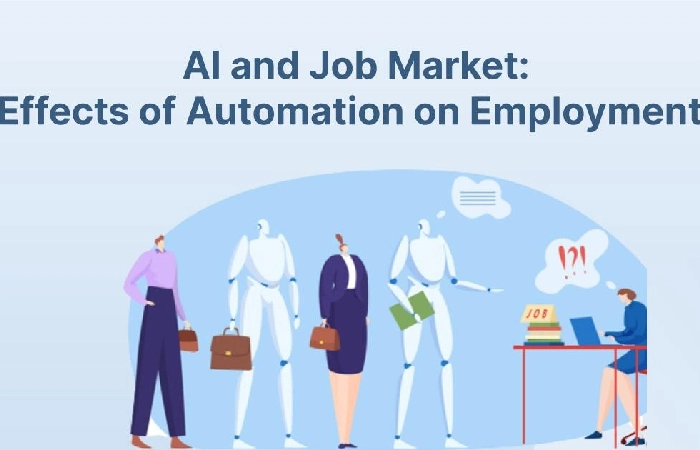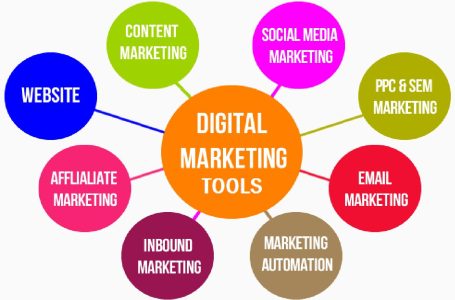AI statistics – Artificial intelligence is rapidly invading all areas of our lives, and there seems to be no one to stop it. This technology is changing the game’s rules, especially in the business world, where it allows decisions to be made based on data, automating and improving the customer experience.
With how quickly things are moving and the vast number of information sources available, we’ve compiled these up-to-date AI statistics to give you a snapshot of AI in 2023. Read on for fascinating insights into who’s using AI, how you use it, and how it affects the workplace.
Featured Statistics on Artificial Intelligence

- Global AI Market Projected to Reach Value of $1.35 Trillion by 2030.
- By 2030, the growth of AI technology has the potential to contribute $15.7 trillion to the global economy.
- ChatGPT is estimated to cost at least $700,000 to operate—a day to run.
- More than 4 million AI-generated images are produced with Dall-E per day.
- 57% of Americans are looking forward to AI technology replacing household chores.
AI Growth Statistics
Artificial intelligence has seen remarkable growth in recent years, and this growth in AI statistics underlines its unprecedented expansion.
From chatbots to generative AI statistics and image generators, the proliferation of AI technologies across various sectors has driven transformative advances and unleashed a wave of innovation.
According to Grand View Research, the AI market is already worth $136.55 billion.
Their report forecasts a CAGR of 37.3% from 2023 to 2030.
Global AI forecast
A global AI forecast from Marketsandmarkets predicts a slightly lower CAGR of 36.8%. According to this report, the AI market will be worth $1.35 trillion in 2030. Meanwhile, another report from Presedence Research predicts a more modest value of $962 billion in 2030, rapidly rising to 1.87 trillion dollars in 2032.
According to Global Market Insights, the AI wearables market is expected to reach $180 billion worldwide by 2025.
According to Allied Market Research, AI in the social media market is expected to reach $12 billion by 2031, representing a CAGR of 28.7% from 2022 to 2031.
91% of leading organizations are investing in AI activities.
About the same number, they say their investment in data and AI activities is increasing yearly. This is clear from the 2022 NewVantage Partners annual survey. 92% of companies are already realizing benefits from these investments.
IBM reports that the global AI adoption rate was 35% in 2022, 4 percentage points higher than the previous year.
ChatGPT launched in November 2022, and within five days, more than one million users had subscribed to the service.
The only service that has surpassed this user registration rate is the new social network Threads, which took just one hour to reach one million users, Statista reports.
A Forbes study reveals that 97% of business owners believe ChatGPT will positively impact their operations.
Statistics from OpenAI
The latest statistics from OpenAI, creators of the AI image generator Dall-E and ChatGPT, show that it has more than 3 million active users, generating more than 4 million images daily.
94% of business leaders believe AI will be critical to business success in the next five years, according to Deloitte’s State of AI in the Enterprise report, 5th edition, published in 2022. This survey surveyed 2,620 global leaders whose companies already use AI statistics to some extent.
PwC’s Global Artificial Intelligence Study predicts that AI technology could contribute an additional $15.7 trillion to the global economy by 2030.
This is equivalent to a GDP increase of up to 26% in China and 14.5% in North America. These two regions account for almost 70% of global projected profits.
Productivity and improvements that stimulate customer demand are expected to generate significant profits.
Artificial intelligence and workforce data
Below, we look at who is using AI, what they are using it for, and how it is expected to impact the workforce in the coming years.
How is AI used at work?
A survey conducted by McKinsey in 2022 revealed exciting data on the current use of AI in companies:
- Development of products and services: 55%
- Marketing and sales: 55
- Service operations (including customer service and back office): 54%
- Modeling and risk analysis: 15%
- A more detailed breakdown can be seen in the following graph:
- Forbes statistics collected from 600 business owners reveal the following ways companies are using or plan to use AI to improve customer experience:
- Chatbots for instant messaging: 73%.
- Email writing: 61%
- Product recommendations and other personalized services: 55%
- Composing text messages: 49%
- Personalized advertising: 46%
- Long-form written content for websites, etc.: 42%.
- Phone calls: 36%
- 56% of these business owners say they already use or plan to use AI for customer service.
- Other top uses include cybersecurity and fraud management, personal digital assistants, and customer relationship management, at 51%, 47%, and 46%, respectively.
AI used at work
We’re already seeing fantastic use cases outside of the technology and marketing space:
By reading doctor’s notes, researchers at the University of British Columbia and BC Cancer have developed an AI that predicts cancer survival with 80% accuracy.
According to an article published in Nature, a revolutionary AI tool can now predict the structures of 200 million proteins. Stored in a 23-terabyte database, this information could offer new possibilities for developing drugs primarily based on these protein structures.
Scientists at the University of Oxford have developed an AI capable of reading lips with 400% more accuracy than a human lip reader.
Emotion AI, which uses natural language processing (NLP) to detect human emotions in text, could soon be used in healthcare applications to help doctors assess and monitor the emotional state of patients, especially those who suffer from neurodiverse diseases. It could also be used to provide mental health assessments and diagnose illnesses, Neuroscience News reports.
How does AI affect jobs and workers?

According to Deloitte’s State of AI in the Enterprise survey, 82% of business leaders believe AI improves job satisfaction and performance.
At the same time, 47% say that AI technology generates fear or concern.
Marketsandmarkets predicts that by 2030, AI will have reached human-level sophistication and could threaten many more jobs than today.
However, Americans seem to be quite sensitive to this risk already. In a Pew Research Center study, “human job loss” was cited as the top reason people are more worried than excited about the growth of AI.
However, younger people are more optimistic about AI in the workplace.
According to data published in Statista, 42% of Americans between 18 and 44 believe AI will create many more jobs, compared to only 6% of those over 45. 48% of older people believe that AI will lead to many fewer jobs for people, while only 18% of the younger age group have this opinion.
Do Americans believe that artificial intelligence will lead to more jobs for people or fewer?
A study published by Goldman Sachs in April 2023 predicts that AI systems will significantly increase jobs worldwide, potentially replacing 300 million full-time positions.
The study also notes that two-thirds of American professions are somewhat vulnerable to AI.
The professions most at risk of automation in the US, based on the proportion of tasks that could be automated, are:
- Administrative and office support: 46%
- Legal work: 44%
- Architecture and engineering: 37%
- Life, physical, and social sciences 36%
- Business and financial operations: 35%
Economists estimate that 60% of today’s workforce is employed in jobs that did not exist 80 years ago.
This equates to 85% of employment growth from positions created around new technologies.
Stanford University’s annual AI Index 2023 report revealed that in 2022, 2.05% of job openings in the US required some AI-related skill.
It may not seem like much, but it is a figure that has been rising steadily in recent years. Canada is second, with 1.45% of jobs requiring AI knowledge, and Spain is third, with 1.33%. The researchers found that in all countries studied, the percentage of jobs requiring AI skills had increased since 2014.
The US is not the market with the highest AI penetration rate.
That crown goes to India, with a rate of 3.23, 45% higher than the US, in second place.
What jobs require AI skills?
McKinsey’s global survey on AI sheds some light on this topic.
Software engineers come in first place, with 39% of companies saying they have hired for this role related to AI. They are followed by data engineers and AI data scientists, with 35% and 33%, respectively.
However, there is some hope for people without an engineering background, as design specialists and translators are in the top 10.
Regarding specific AI skills, Python – a widely used programming language – is mentioned in 37% of AI job postings in the United States, of which there were almost 800,000 in 2022, Visual Capitalist reports.
Two other languages appear in the top 10: SQL is mentioned in 23% of job offers, and Java is mentioned in 17%. Computer science, data analytics, and data science also rank high, cited in 33%, 20%, and 20% of jobs, respectively.
Not surprisingly, California is responsible for the most significant number of AI-related jobs, with 17.9% of the share in the US.
This is more than double that of second place, Texas, with 8.4%. However, with some companies moving to Texas to benefit from lower taxes and operating costs, this gap is showing signs of narrowing.
Artificial intelligence and business statistics

How much is it going to cost to implement all this AI? And, just as important, how much will companies save by using it?
Industrial companies adopting AI technology are already seeing significant cost and time savings.
A 2022 Accenture report detailed that some companies that used AI for product design, development, and production saved 30 times more than others thanks to better use of technologies such as automated guided vehicles and predictive fleet management. Supply chain.
Cost savings and efficiency are the top benefits for companies using AI, with 54% of organizations citing it in a 2022 IBM survey. Improvements in IT or network performance come in second at 53% while improving customer experience comes in third at 48%.
Netflix reported that its AI-based personalized recommendation system saved $1 billion annually.
This is mainly because viewers engage more with personal recommendations than generic “popular” ones. This increased engagement helps them retain satisfied customers, reduce cancellations, and plan future in-house productions. That was in 2015, so the use and impact of AI can only have increased and improved.
According to a study conducted by Harvard Business Review, companies that pioneered the use of AI in sales achieved impressive results. These include a 40-60% cost savings, a 60-70% reduction in call times, and a 50% increase in leads and sales.
The sectors that will benefit the most from AI systems have traditionally made intensive use of labor or capital.
An Accenture report lists the growth in profits by sector in 2035, comparing the baseline situation without AI with the expected earnings with AI.
The industries that come out best are:
- Education: 84
- Accommodation and food services 74%
- Construction 71%
- Wholesale and retail trade: 59%
- Health 55%
- Agriculture, forestry and fishing: 53
Supply chain management AI
Supply chain management using AI has also seen tremendous success. According to McKinsey, early adopters of this technology saved 15% in logistics costs while increasing inventory by 35% and service levels by 65% compared to their competitors.
McKinsey also reported one of the most dramatic use cases for AI in 2017, when Amazon acquired Kiva, a robotics company that automates warehouse picking and packing. The result was that Amazon’s click-to-ship cycle, which generally took 60 to 75 minutes with humans, was reduced to a staggering 15 minutes with robots. Additionally, inventory capacity increased by 50%, and operating costs decreased by 20%.
Despite these positive results, many companies consider cost an obstacle to implementing AI solutions. IBM reports that 29% of companies delay AI adoption due to price. This figure is only surpassed by a lack of knowledge or experience in AI, which 34% consider a barrier.
A cost model developed by Dylan Patel and Afzal Ahmad for Semianalysis estimates that ChatGPT costs about $700,000 a day to run.
That equates to about $0.36 per query, according to figures from February 2023, when the research was published. ChatGPT has since moved from OpenAI’s GPT-3 to GPT-4, which requires much more computing power. Therefore, the current actual cost may be much higher.
The environmental cost must also be taken into account. According to a study from the University of Massachusetts Amherst, training a single deep-learning algorithm can emit 313 tons of CO2. That’s five times more than the average car emits over its lifetime.
Statistics on the risks of using AI in the workplace

The Stanford University report analyzed the risk of gender and racial bias when using AI technology.
Images generated with DALL-E 2 portrayed 97% of people in positions of authority (such as CEO and Director) as white men, despite these roles being filled by 29.1% and 39.6% of women, respectively.
This research also found that certain adjectives such as “unreasonable,” “stubborn,” and “intellectual” were generally associated with men, while “compassionate,” “sensitive,” and “emotional” were more often associated with women.
This presents worrying risks if AI technology is used for things like job profiling before bias has been neutralized. However, this can be an uphill struggle, as models are typically trained on real-world data that intrinsically contains these biases.
Companies seem pretty aware of the risks that AI technology presents to their companies.
According to the Stanford report, these are the main risks derived from the adoption of AI that organizations consider relevant in 2022:
- Cybersecurity: 59
- Regulatory compliance: 45%
- Personal/individual privacy: 40
- Explainability: 37
- Organizational reputation: 32%
- Equity and impartiality: 30%
- Labor displacement: 28
- Physical security: 20%.
- National security: 13
- Political stability: 9%.
However, the report noted that “there are significant differences between the risks that organizations consider relevant and those they have adopted to mitigate them.”
Additionally, an IBM study revealed that 74% of organizations already using AI have not taken steps to reduce unintentional bias in their AI systems. 60% have not yet developed policies on the ethical use of AI in their workplace.
A Forbes survey revealed some additional concerns that business owners have about the impact of AI:
- 43% are concerned about depending on AI technology
- 33% are concerned about possible workforce reduction
- 31% are worried about privacy
- 30% fear that AI will provide the company or its
customers with wrong information - 28% are concerned about bias errors
- 24% believe it will reduce traffic to their websites.
Statistics on the uses of artificial intelligence
Let’s look at some statistics about using artificial intelligence in our homes and daily lives.
According to the Pew Research Center, 57% of Americans are excited about AI replacing household chores. 40% say the same about AI diagnosing diseases, and 9% are excited about AI helping them make important life decisions.
In another survey conducted by Forbes, the primary uses of AI were cited:
- Responding to people via text or email: 45%
- Answer financial questions: 43%
- Plan a travel itinerary: 38%
- Compose an email: 31%
- Prepare for a job interview: 30%
- Write a post on social networks: 25%
- Summarize complex or extensive texts: 19%
Driverless or autonomous vehicles appear to be an example of AI technology where consumer sentiment lags. The driverless car market is projected to grow at a CAGR of 13.3%, from 20.3 million units in 2021 to 62.4 million in 2030.
Traffic accidents caused 38,680 fatalities in the United States in 2020, and approximately 1.2 million road deaths occurred worldwide. According to an article published in The Atlantic, driverless cars could reduce these deaths by 90% by mid-century. This is equivalent to saving more than 30,000 lives annually in the United States alone.
However, Americans seem reluctant to adopt this technology. According to a survey by the Pew Research Center, only 26% of Americans believe that the widespread use of autonomous vehicles would suit society. Compared to 44% who believe it is a bad idea.
Google Assistant has proven to be the most accurate of the principal digital assistants when responding to queries. Data published on Statista shows that Google Assistant has an overall accuracy of 93%, compared to 83% for Siri and 80% for Alexa. The only category where Siri bested Google Assistant was with voice commands for phone-related functions.
AI statistics technology has been all over the news since the beginning of the decade. Here are some of the top AI statistics that have made headlines:
Microsoft Bing surpassed 100 million daily users in March 2023, driven by adding an artificial intelligence chatbot to its search function.
ChatGPT-4 passed the bar exam with a score that exceeded 7% of human examinees and exceeded the passing threshold, according to research published in SSRN in March 2023.
However, there are about 1.8 billion visits a month to chat.openai.com, the website from which ChatGPT is accessed, according to Similarweb. That’s about 60 million visits a day.
The United States is the largest user of ChatGPT’s generative AI tool. 12% of these visits come from the US, 8% from India and 4% from Japan.
While ChatGPT is booming, one of the original AI writing tools, Jarvis (formerly Jasper), suffers. Site traffic fell 67% between April and June 2023, from 71.6K users/month to 23.7K.
According to a study published in July 2023 by Deloitte, more than half (52%) of British adults have heard of generative artificial intelligence, and more than a quarter (26%) have used it.
After ten years working for Google, computer scientist Geoffrey Hinton resigned from his position in May 2023 and warned the public of the “existential risk” that AI systems pose to humanity.





